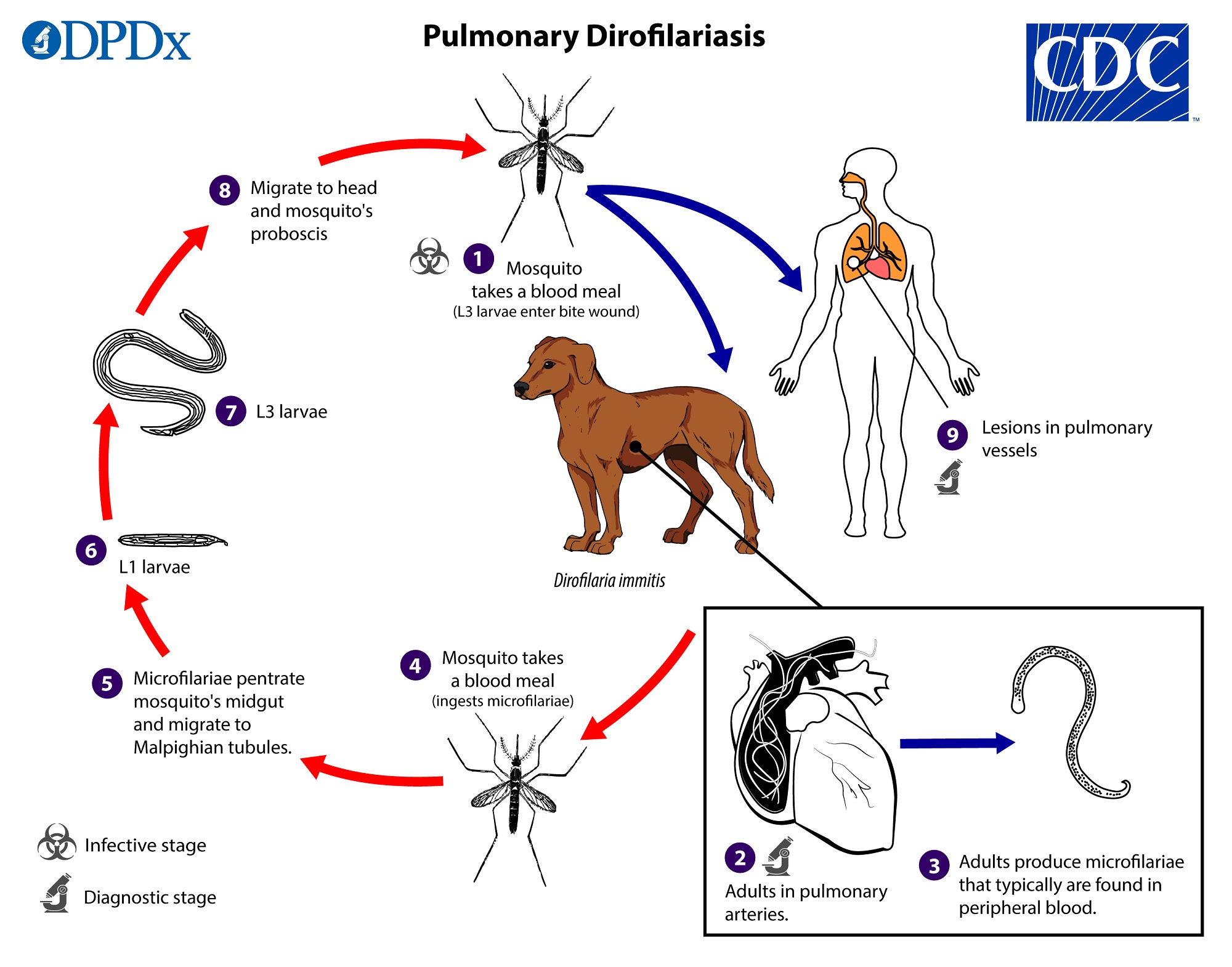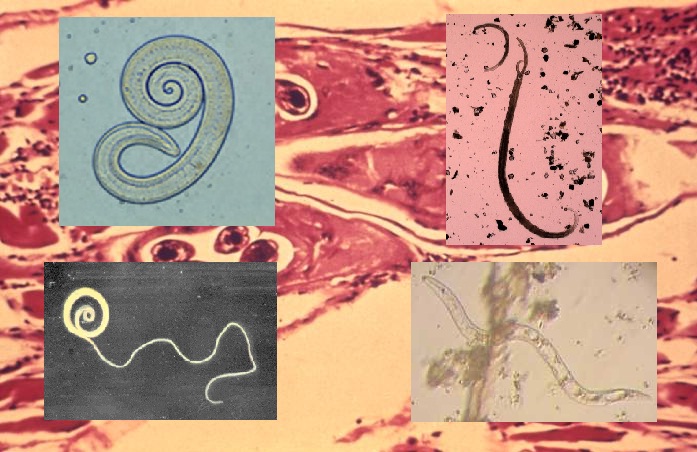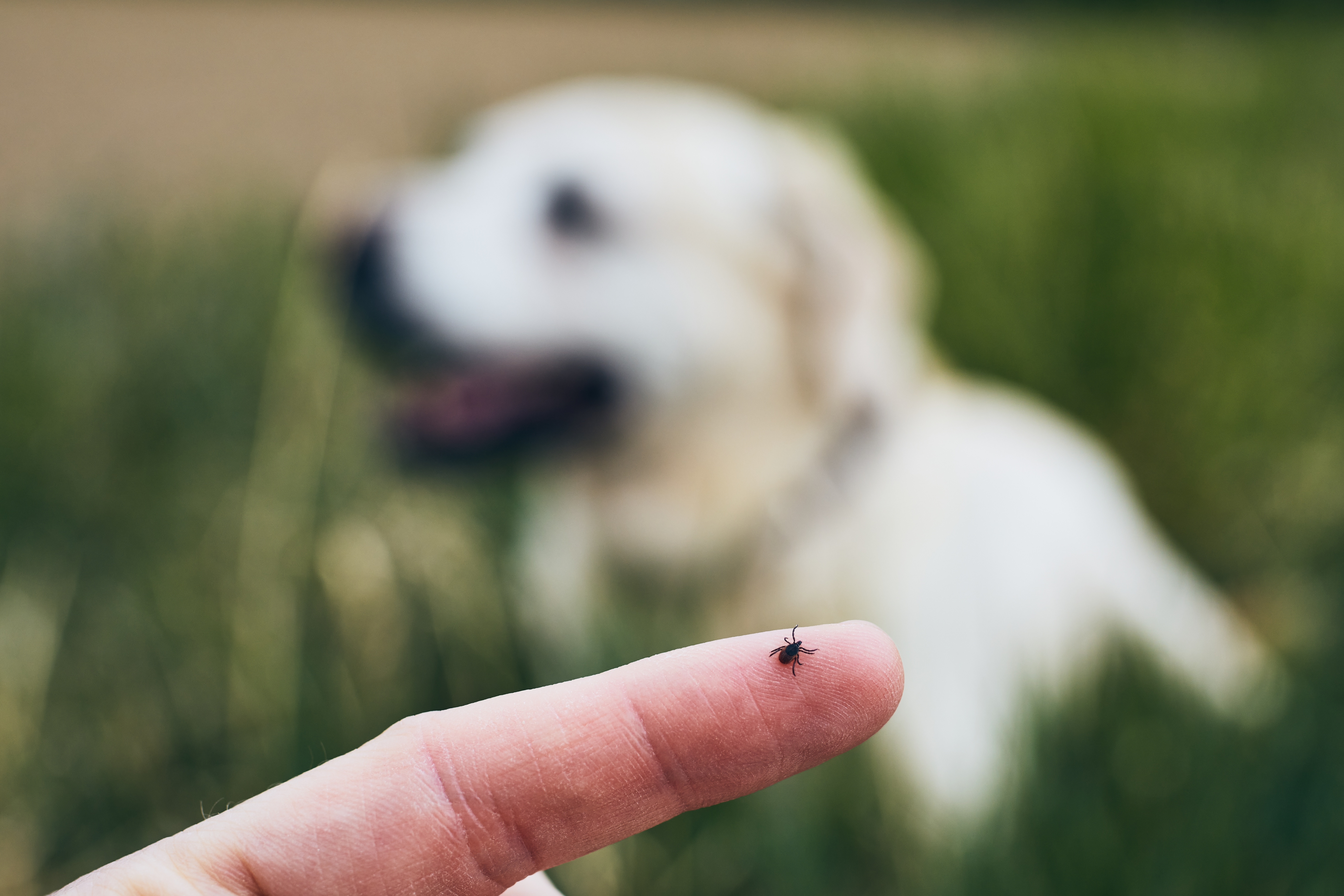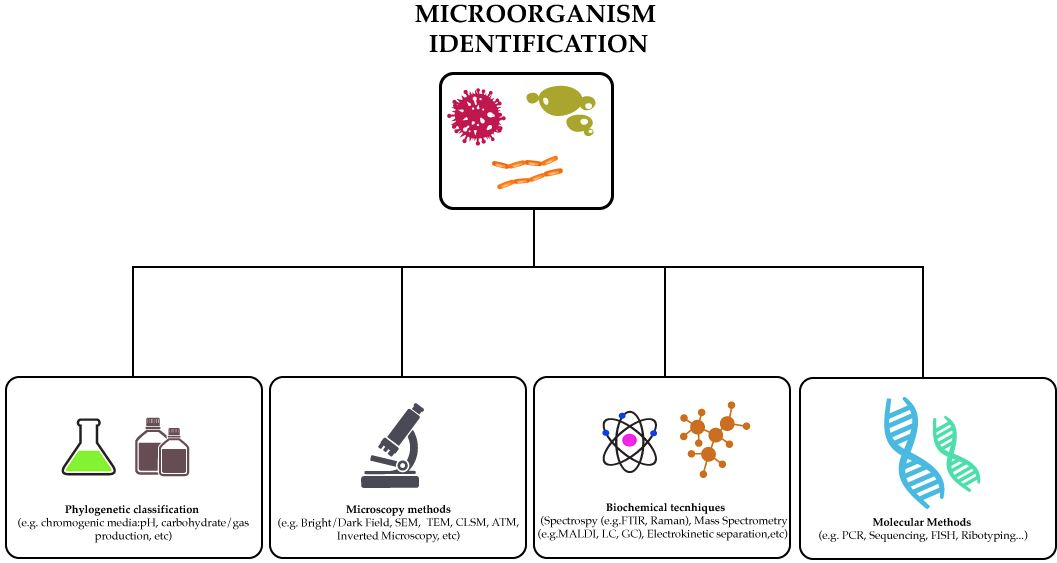10 Parasites That Can Harm Your Dog (And How to Prevent Them)
Dogs are beloved companions who enrich our lives with joy and loyalty, but they are also vulnerable to various health threats, including harmful parasites. These unwelcome invaders can cause significant health issues, ranging from mild discomfort to severe diseases that can be life-threatening. Understanding the various types of parasites, their life cycles, and the ways they affect dogs is crucial for every responsible pet owner. This article aims to provide comprehensive insights into keeping your dog safe from these parasites, focusing on prevention tactics and the importance of regular veterinary care. By the end of this exploration, you will be equipped with essential knowledge to protect your furry friend from these insidious threats, ensuring a healthier and happier life together.
1. Understanding Fleas and Their Control

Fleas are one of the most common external parasites affecting dogs, and their presence can lead to a host of problems, including skin irritation, allergic reactions, and even the transmission of other parasites like tapeworms. These tiny, wingless insects thrive in warm, humid environments and can quickly infest a dog, leading to discomfort and potential health issues. Understanding the flea life cycle is crucial for effective control, as it involves four stages: egg, larva, pupa, and adult. Each stage requires specific strategies for eradication, making comprehensive control measures essential.
Flea infestations often begin with adult fleas laying eggs on the host dog, which then fall off into the environment, such as bedding or carpets. These eggs hatch into larvae, which feed on organic debris before spinning cocoons to become pupae. The pupae can remain dormant for weeks or even months, waiting for favorable conditions to emerge as adults and reinfest the host. This cycle highlights the importance of treating both the dog and its environment to break the flea life cycle effectively.
Preventing flea infestations involves a multi-faceted approach, including regular use of veterinarian-recommended flea preventatives, maintaining a clean living environment, and frequent grooming. Topical treatments, oral medications, and flea collars are popular options for controlling fleas on dogs, while vacuuming and washing bedding can help manage the environment. By understanding the flea life cycle and implementing a comprehensive prevention plan, you can protect your dog from the discomfort and health risks associated with flea infestations.
2. The Threat of Ticks and Lyme Disease

Ticks are another common external parasite that poses significant health risks to dogs, primarily through the transmission of diseases such as Lyme disease, ehrlichiosis, and anaplasmosis. These arachnids attach themselves to the host to feed on blood, potentially transmitting pathogens during the process. Ticks are often found in grassy or wooded areas, making outdoor activities a common risk factor for dogs. Understanding the behaviors and habitats of ticks is essential for effective prevention and control.
Lyme disease is one of the most well-known tick-borne illnesses, caused by the bacterium Borrelia burgdorferi. It can lead to symptoms such as fever, lethargy, joint pain, and in severe cases, kidney damage. Early detection and treatment are crucial to prevent long-term health complications. Regularly checking your dog for ticks, especially after outdoor activities, is a critical step in prevention. Removing ticks promptly can reduce the risk of disease transmission, as it typically takes several hours for pathogens to be transmitted after a tick attaches.
Preventive measures against ticks include using veterinarian-recommended tick preventatives, such as topical treatments, oral medications, or tick collars. Additionally, maintaining a tidy yard by trimming grass and shrubs can reduce tick habitats. For dogs that frequently spend time in tick-prone areas, vaccination against Lyme disease may be recommended by your veterinarian. By understanding the risks associated with ticks and implementing effective prevention strategies, you can protect your dog from the serious health threats posed by these parasites.
3. Heartworms: A Silent Killer

Heartworms are potentially fatal parasites that live in the heart and pulmonary arteries of infected dogs. Transmitted by mosquitoes, heartworm disease can lead to severe lung disease, heart failure, and damage to other organs. The insidious nature of heartworms lies in their ability to remain undetected in the early stages, often causing significant damage before symptoms become apparent. Understanding the life cycle of heartworms and the importance of prevention is vital for safeguarding your dog's health.
The heartworm life cycle begins when a mosquito bites an infected animal, ingesting microscopic larvae called microfilariae. These larvae develop within the mosquito and are transmitted to another host during subsequent bites. Once inside the new host, the larvae migrate to the heart and lungs, maturing into adult worms over several months. The presence of adult heartworms can lead to symptoms such as coughing, fatigue, and weight loss, with severe cases resulting in heart failure or death.
Preventing heartworm disease is far more effective and less costly than treating an established infection. Regular administration of heartworm preventatives, available in oral or topical forms, is recommended for all dogs, especially those living in mosquito-prone areas. Annual heartworm testing is also crucial, as it ensures early detection and treatment if necessary. By prioritizing heartworm prevention, you can protect your dog from this silent yet deadly parasite, ensuring a longer, healthier life.
4. Intestinal Worms and Their Management

Intestinal worms, including roundworms, hookworms, whipworms, and tapeworms, are common internal parasites that can affect dogs of all ages. These worms inhabit the gastrointestinal tract, where they feed on nutrients or blood, potentially leading to malnutrition, anemia, and other health issues. Puppies are particularly susceptible to intestinal worms, as they can be transmitted from the mother during pregnancy or through nursing. Understanding the different types of intestinal worms and their prevention is essential for maintaining your dog's health.
Roundworms are among the most prevalent intestinal worms, often causing symptoms such as diarrhea, vomiting, and a pot-bellied appearance in puppies. Hookworms, on the other hand, attach to the intestinal lining and feed on blood, leading to anemia and weakness. Whipworms inhabit the large intestine, causing diarrhea and weight loss, while tapeworms are transmitted through the ingestion of infected fleas, leading to segments in the dog's feces or around the anus.
Preventing intestinal worm infestations involves regular deworming, particularly for puppies and dogs with high exposure risks. Veterinarians can recommend appropriate deworming schedules and medications based on your dog's age, lifestyle, and health status. Maintaining good hygiene, such as promptly disposing of feces and preventing scavenging behavior, can also help reduce the risk of infection. By understanding the threats posed by intestinal worms and implementing effective prevention strategies, you can protect your dog from these common parasites and their associated health risks.
5. The Role of Vaccinations in Parasite Prevention

Vaccinations play a crucial role in protecting dogs from certain parasites and the diseases they transmit. While not all parasites can be prevented through vaccination, some, such as those associated with Lyme disease and leptospirosis, can be effectively managed with appropriate immunization. Understanding the role of vaccinations in parasite prevention is essential for developing a comprehensive health plan for your dog.
Lyme disease vaccination is recommended for dogs living in or traveling to areas with high tick populations. This vaccine helps reduce the risk of infection from the Borrelia burgdorferi bacterium, which is transmitted by ticks. Similarly, vaccination against leptospirosis, a bacterial disease spread through contaminated water or soil, can protect dogs from severe kidney and liver damage. While not directly caused by parasites, leptospirosis is often associated with environments where parasitic threats are present.
In addition to specific parasite-related vaccines, core vaccinations, such as those for distemper and parvovirus, are essential for overall health and can indirectly reduce the risk of parasitic infections by maintaining a robust immune system. Regular veterinary check-ups are crucial for ensuring your dog is up-to-date on all necessary vaccinations, tailored to their lifestyle and risk factors. By prioritizing vaccinations as part of your dog's health regimen, you can provide an additional layer of protection against harmful parasites and the diseases they carry.
6. The Importance of Regular Veterinary Check-Ups

Regular veterinary check-ups are a cornerstone of effective parasite prevention, providing an opportunity for early detection and treatment of infestations. During these visits, veterinarians can perform comprehensive health assessments, including screenings for parasites, and recommend appropriate prevention strategies based on your dog's individual needs. Understanding the importance of routine veterinary care is crucial for maintaining your dog's health and well-being.
Veterinary check-ups typically include a thorough physical examination, during which the veterinarian can identify signs of parasite infestations, such as skin irritation, weight loss, or changes in behavior. Fecal examinations are also commonly performed to detect intestinal worms, while blood tests can identify heartworm infections. These diagnostic tools are essential for ensuring timely intervention and preventing the progression of parasitic diseases.
In addition to diagnostics, veterinarians can provide guidance on effective parasite prevention measures, including the use of preventatives, vaccinations, and environmental management. They can also tailor recommendations to your dog's specific lifestyle, taking into account factors such as age, breed, and geographic location. By prioritizing regular veterinary check-ups, you can ensure your dog receives the best possible care, reducing the risk of parasite-related health issues and promoting a long, healthy life.
7. Environmental Management and Parasite Control

Effective parasite prevention extends beyond the dog itself to include the management of the environment in which it lives. Many parasites, such as fleas and ticks, have life stages that occur in the environment, making it essential to maintain a clean and safe living space for your dog. Understanding the role of environmental management in parasite control is crucial for comprehensive prevention.
Fleas, for example, lay eggs that fall off the host and develop in the environment, such as carpets, bedding, and outdoor areas. Regular cleaning, including vacuuming and washing bedding, can help eliminate flea eggs and larvae, reducing the risk of reinfestation. Similarly, maintaining a tidy yard by trimming grass and shrubs can reduce tick habitats, minimizing the risk of exposure during outdoor activities.
In addition to cleanliness, environmental management may involve the use of insecticides or natural repellents to control parasite populations. These products can be applied to outdoor areas or used in conjunction with preventative treatments for the dog. Consulting with a veterinarian can help determine the most effective and safe options for your specific situation. By prioritizing environmental management as part of your parasite prevention strategy, you can create a safer, healthier environment for your dog, reducing the risk of infestation and promoting overall well-being.
8. Nutritional Support for a Strong Immune System

A strong immune system is a dog's best defense against parasites and the diseases they transmit. Proper nutrition plays a vital role in maintaining immune health, providing the essential nutrients needed for optimal function. Understanding the importance of nutritional support in parasite prevention is crucial for developing a comprehensive health plan for your dog.
A balanced diet rich in high-quality proteins, vitamins, and minerals supports the immune system by providing the building blocks needed for the production of immune cells and antibodies. Omega-3 fatty acids, found in fish oil and flaxseed, have anti-inflammatory properties that can enhance immune function, while antioxidants, such as vitamins C and E, help protect cells from damage caused by free radicals.
In addition to a balanced diet, certain supplements may be beneficial for dogs with specific health needs or those at higher risk of parasitic infections. Probiotics, for example, can support gut health and improve immune response, while specific herbal supplements may offer additional protection against parasites. Consulting with a veterinarian or a pet nutritionist can help determine the best dietary plan and supplements for your dog's individual needs. By prioritizing nutritional support as part of your parasite prevention strategy, you can enhance your dog's natural defenses, reducing the risk of infestation and promoting overall health.
9. Behavioral Training and Parasite Avoidance

Behavioral training is an often-overlooked aspect of parasite prevention, yet it plays a crucial role in reducing the risk of exposure to harmful parasites. Teaching your dog to avoid certain behaviors, such as scavenging, drinking from stagnant water, or roaming in high-risk areas, can significantly reduce the likelihood of infestation. Understanding the role of behavioral training in parasite avoidance is essential for responsible pet ownership.
Scavenging, for example, can expose dogs to intestinal worms and other parasites found in contaminated food or feces. Training your dog to avoid picking up or eating items from the ground is a valuable skill that can prevent accidental ingestion of parasites. Similarly, teaching your dog to avoid drinking from puddles or stagnant water can reduce the risk of exposure to waterborne parasites, such as giardia or leptospirosis.
In addition to specific avoidance behaviors, obedience training can enhance overall safety during outdoor activities, such as hiking or visiting parks. Commands like "stay" or "come" can prevent your dog from wandering into areas with high parasite risks, such as dense brush or tall grass. By incorporating behavioral training into your parasite prevention strategy, you can reduce the risk of exposure and ensure a safer, healthier environment for your dog.
10. Emerging Parasite Threats and Climate Change

Climate change is altering the landscape of parasite threats, extending the range and activity of many parasites that affect dogs. Warmer temperatures and changing precipitation patterns are creating favorable conditions for parasites like ticks, fleas, and mosquitoes, leading to increased risks of infestation and disease transmission. Understanding the impact of climate change on parasite threats is crucial for adapting prevention strategies and safeguarding your dog's health. Ticks, for example, are expanding their range northward as warmer temperatures allow them to survive in previously inhospitable areas. This expansion increases the risk of tick-borne diseases, such as Lyme disease, in regions where they were once uncommon. Similarly, warmer winters can lead to year-round flea activity, complicating control efforts and increasing the likelihood of infestations.
Mosquito populations, responsible for transmitting heartworms, are also affected by climate change, with increased rainfall and warmer temperatures leading to more breeding sites and longer activity periods. These changes underscore the importance of staying informed about emerging parasite threats and adapting prevention strategies accordingly. Regular communication with your veterinarian can help ensure your dog receives appropriate protection based on current risk factors. By understanding the impact of climate change on parasite threats, you can take proactive measures to protect your dog from evolving risks.







